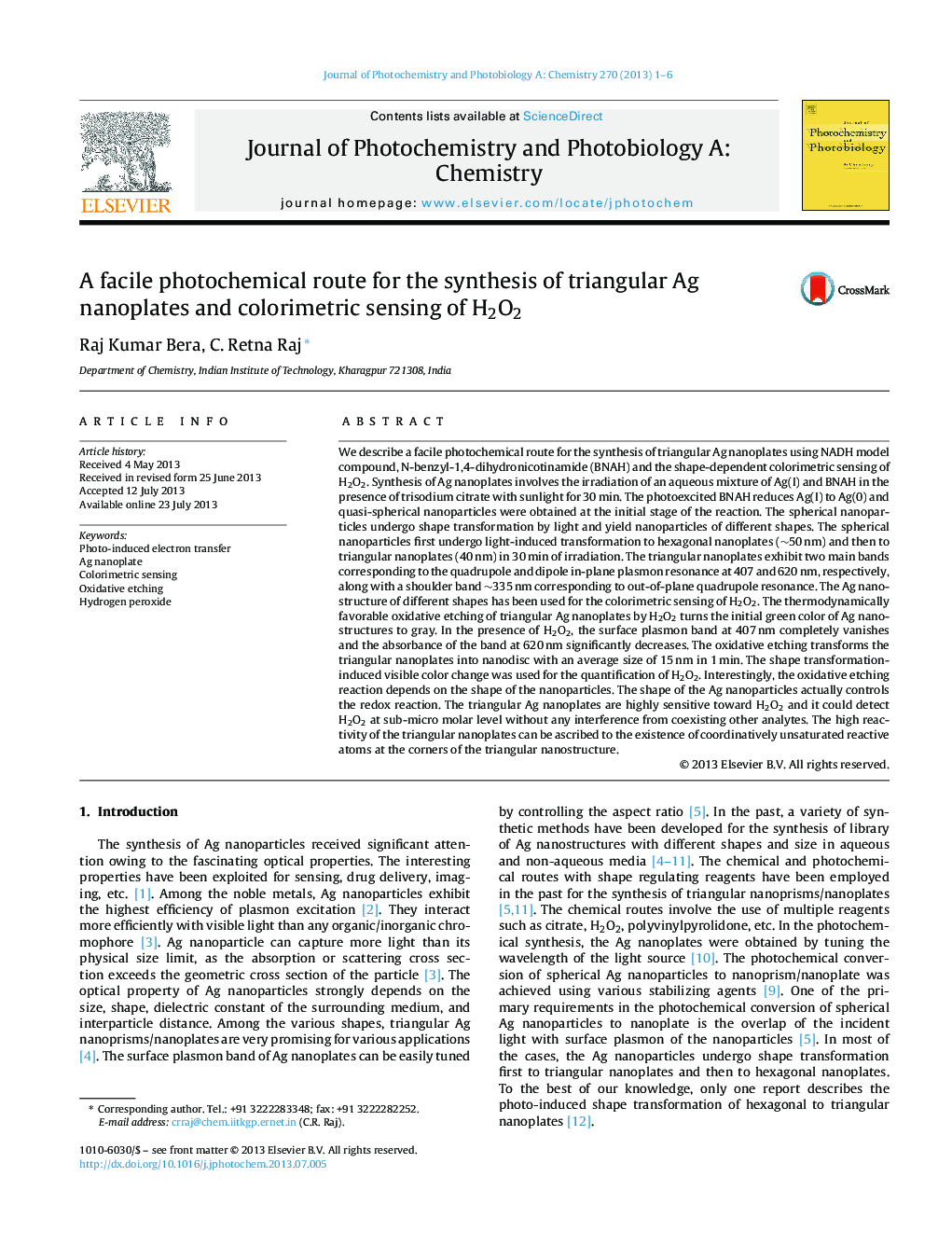| Article ID | Journal | Published Year | Pages | File Type |
|---|---|---|---|---|
| 27400 | Journal of Photochemistry and Photobiology A: Chemistry | 2013 | 6 Pages |
•Sunlight-induced electron transfer reaction between N-benzyl-1,4-dihydronicotinamide and Ag(I) yields Ag nanoparticles of different shapes.•The colorimetric sensing H2O2 at sub-micromolar level is demonstrated using the Ag nanoparticles.•Shape of the nanoparticles regulates the activity of the nanoparticles.
We describe a facile photochemical route for the synthesis of triangular Ag nanoplates using NADH model compound, N-benzyl-1,4-dihydronicotinamide (BNAH) and the shape-dependent colorimetric sensing of H2O2. Synthesis of Ag nanoplates involves the irradiation of an aqueous mixture of Ag(I) and BNAH in the presence of trisodium citrate with sunlight for 30 min. The photoexcited BNAH reduces Ag(I) to Ag(0) and quasi-spherical nanoparticles were obtained at the initial stage of the reaction. The spherical nanoparticles undergo shape transformation by light and yield nanoparticles of different shapes. The spherical nanoparticles first undergo light-induced transformation to hexagonal nanoplates (∼50 nm) and then to triangular nanoplates (40 nm) in 30 min of irradiation. The triangular nanoplates exhibit two main bands corresponding to the quadrupole and dipole in-plane plasmon resonance at 407 and 620 nm, respectively, along with a shoulder band ∼335 nm corresponding to out-of-plane quadrupole resonance. The Ag nanostructure of different shapes has been used for the colorimetric sensing of H2O2. The thermodynamically favorable oxidative etching of triangular Ag nanoplates by H2O2 turns the initial green color of Ag nanostructures to gray. In the presence of H2O2, the surface plasmon band at 407 nm completely vanishes and the absorbance of the band at 620 nm significantly decreases. The oxidative etching transforms the triangular nanoplates into nanodisc with an average size of 15 nm in 1 min. The shape transformation-induced visible color change was used for the quantification of H2O2. Interestingly, the oxidative etching reaction depends on the shape of the nanoparticles. The shape of the Ag nanoparticles actually controls the redox reaction. The triangular Ag nanoplates are highly sensitive toward H2O2 and it could detect H2O2 at sub-micro molar level without any interference from coexisting other analytes. The high reactivity of the triangular nanoplates can be ascribed to the existence of coordinatively unsaturated reactive atoms at the corners of the triangular nanostructure.
Graphical abstractPhoto-induced electron transfer reaction between N-benzyl-1,4-dihydronicotinamide and Ag(I) yields Ag nanoparticles of different shapes. The colorimetric sensing H2O2 at sub-micromolar level is demonstrated using the Ag nanoparticles. Shape of the nanoparticles regulates the activity.Figure optionsDownload full-size imageDownload as PowerPoint slide
